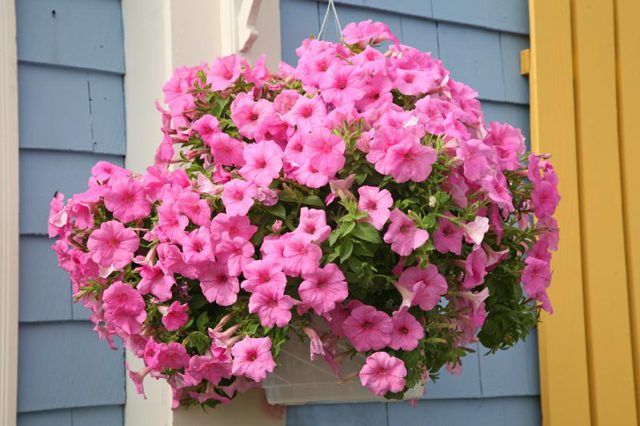Bulbs
Flower Basics
Flower Beds & Specialty Gardens
Flower Garden
Garden Furniture
Garden Gnomes
Garden Seeds
Garden Sheds
Garden Statues
Garden Tools & Supplies
Gardening Basics
Green & Organic
Groundcovers & Vines
Growing Annuals
Growing Basil
Growing Beans
Growing Berries
Growing Blueberries
Growing Cactus
Growing Corn
Growing Cotton
Growing Edibles
Growing Flowers
Growing Garlic
Growing Grapes
Growing Grass
Growing Herbs
Growing Jasmine
Growing Mint
Growing Mushrooms
Orchids
Growing Peanuts
Growing Perennials
Growing Plants
Growing Rosemary
Growing Roses
Growing Strawberries
Growing Sunflowers
Growing Thyme
Growing Tomatoes
Growing Tulips
Growing Vegetables
Herb Basics
Herb Garden
Indoor Growing
Landscaping Basics
Landscaping Patios
Landscaping Plants
Landscaping Shrubs
Landscaping Trees
Landscaping Walks & Pathways
Lawn Basics
Lawn Maintenance
Lawn Mowers
Lawn Ornaments
Lawn Planting
Lawn Tools
Outdoor Growing
Overall Landscape Planning
Pests, Weeds & Problems
Plant Basics
Rock Garden
Rose Garden
Shrubs
Soil
Specialty Gardens
Trees
Vegetable Garden
Yard Maintenance
How to Propagate Petunias
How to Propagate Petunias. One of the most popular warm-weather bedding plants, petunias (Petunia x hybrida) provide abundant, colorful flowers from spring through fall. A huge number of cultivars go from single to double flowers, with a multitude of colors. Many hybrids have to be cutting-propagated, because they don't come true from seed. Other...

One of the most popular warm-weather bedding plants, petunias (Petunia x hybrida) provide abundant, colorful flowers from spring through fall. A huge number of cultivars go from single to double flowers, with a multitude of colors. Many hybrids have to be cutting-propagated, because they don't come true from seed. Other varieties will grow from seed. Petunias are tender perennials hardy in U.S. Department of Agriculture plant hardiness zones 9 through 11, and they're annuals elsewhere.
Petunia Seed
If you want a particular variety of petunia, purchase the seed instead of saving it from your own garden plants. Although saved seeds will grow, flower shape and color usually doesn't resemble that of the parent. Petunia seeds are tiny and hard to sow evenly unless you mix them with about 1/2 teaspoon of dry sand to distribute them over the soil.
Sowing Seed
Start petunia seeds indoors or in a greenhouse six to 10 weeks before the last frost date for your area. Use a soilless mix such as equal measures of peat and perlite. Fill a nursery flat that has drainage holes in the bottom with the potting mix, and scatter the seed-and-sand mixture on top of the mix. Press the sown seeds firmly down into the mix, but don't cover them with soil. Water the flat from the bottom so you don't wash out the seeds.
Growing Seedlings
For germination, put containers in bright, indirect light. At normal room temperatures, seeds can germinate in five to 15 days. Seeds can be slow to germinate. Once germinated, seedlings need strong light for about 12 hours a day, so supplement natural light with artificial light, if necessary. Keep the potting mix moist but not soggy, continuing to water from the bottom.
Seedling Care
Once seedlings have developed several sets of true leaves, transfer each seedling into its own 2-inch pot, using the same potting mix. When they've filled out the pot, transplant the seedlings into garden beds, planters or containers such as hanging baskets. Make sure the containers have drainage holes. After all danger of frost has passed, space plants in groups of three or singly, from 8 to 12 inches apart, depending on fast you want coverage.
Petunia Cuttings
To get an exact clone of the parent plant, root petunias from cuttings. Take softwood cuttings in spring or early summer as new growth appears. However, note that it is illegal to root cuttings from a patented petunia variety unless you have a license from the grower. Look for a branch with soft new growth at the tip. Clean the pruners with a cloth soaked in rubbing alcohol to prevent disease. Take a cutting that has four or five leaves on it, cutting just below the last leaf.
Preparations for Taking Cuttings
To root the cuttings, use 2-inch pots with drainage holes that have been washed, soaked for five minutes in a solution of 1 part household bleach to 9 parts of water, and then rinsed well. Fill the pots with a rooting medium of moistened half peat and half perlite.
Rooting Cuttings
Remove the last leaf or two from the cutting and coat the stem base past the area of the highest removed leaf in rooting hormone, shaking off any excess. With a pencil, make a hole in the center of the rooting medium and insert the cutting, firming the mix around the base so the stem is upright. Place the pot into a clear plastic bag, loosely closed at the top, and put it in bright light. Mist the cutting several times a day and keep the rooting medium moist but not soggy.
Transplanting Rooted Cuttings
Petunia cuttings root quickly. Test for rooting by tugging the cutting gently to see if it resists movement. If new growth begins, it's a sign the cutting is rooted. Transplant rooted cuttings to a 4-inch pot with drainage holes, using the same potting mix and watering immediately. Keep the mix moist, watering from the top. Once the rooted cutting fills out the pot and the roots hold the potting mix together, gradually get the plant used to garden conditions over the course of a week or two. Plant the cutting in a sunny location when all danger of frost has passed.